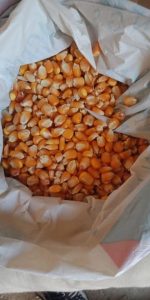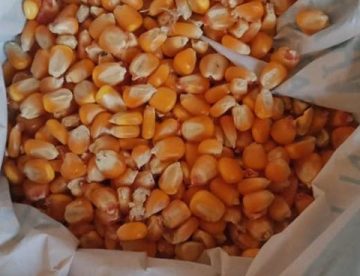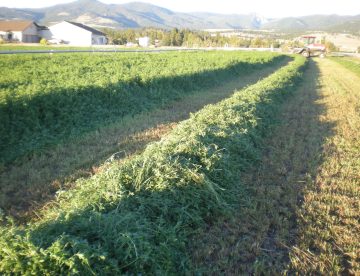Title: “Unlocking the Nutritional Power of Yellow Maize: A Comprehensive Guide to Animal Feed Grade Yellow Corn”

Introduction:
In the dynamic world of animal nutrition, the significance of quality feed cannot be overstated. Among the various grains that cater to the nutritional needs of livestock, yellow maize stands out as a versatile and nutrient-rich option. This comprehensive guide explores the benefits, considerations, and practical applications of yellow maize as animal feed, shedding light on why it’s the go-to choice for farmers worldwide.
Chapter 1: Unveiling the Nutritional Riches of Yellow Maize
Yellow maize, also known as yellow corn, serves as a nutritional powerhouse for animals. Packed with essential nutrients such as carbohydrates, proteins, and fiber, it provides a well-rounded diet for livestock. Additionally, its vibrant yellow color is indicative of the presence of valuable pigments like carotenoids, which contribute to overall animal health.
Chapter 2: Animal Feed Grade Yellow Maize – What Sets It Apart?
Not all maize is created equal, and understanding the distinctions between various grades is crucial for optimizing animal nutrition. Animal feed grade yellow maize undergoes rigorous quality control measures to ensure it meets the nutritional requirements of different species. This chapter explores the criteria that define feed-grade maize and why it is superior for sustaining healthy livestock.
Chapter 3: The Science Behind Yellow Maize Nutrition
Delving into the scientific aspect, this section breaks down the nutritional composition of yellow maize. From energy-rich carbohydrates to essential amino acids and vitamins, each component contributes to the well-being and productivity of animals. A clear understanding of the nutritional science behind yellow maize empowers farmers to make informed decisions about their livestock’s diet.
Chapter 4: Practical Applications in Animal Farming
Practicality is key in the agricultural world, and this chapter outlines the diverse applications of yellow maize in animal farming. Whether it’s formulated into balanced feed pellets, included in a forage-based diet, or used as a supplemental ingredient, yellow maize proves to be adaptable and easy to incorporate into existing feeding programs.
Chapter 5: Ensuring Quality – Sourcing and Storage
To reap the benefits of yellow maize, it is crucial to source and store it correctly. This section provides insights into best practices for selecting high-quality maize, ensuring that it is free from contaminants and molds. Proper storage techniques are also discussed to maintain the nutritional integrity of the feed, safeguarding the health of the livestock.
Chapter 6: Yellow Maize and Livestock Health
A healthy diet directly impacts animal health, and this chapter explores how yellow maize contributes to overall well-being. From promoting growth and reproductive health to enhancing immune function, the nutrients in yellow maize play a pivotal role in maintaining optimal health conditions for livestock.
Chapter 7: Sustainable Farming Practices with Yellow Maize
Sustainability is a growing concern in agriculture, and this chapter examines how incorporating yellow maize into farming practices aligns with eco-friendly initiatives. The crop’s adaptability, efficient use of resources, and positive impact on livestock health contribute to a more sustainable and environmentally conscious approach to animal farming.
Chapter 8: Navigating Challenges – Common Concerns in Yellow Maize Feeding
While yellow maize offers numerous advantages, it is essential to address potential challenges. This section addresses common concerns such as mycotoxin contamination, balancing feed formulations, and mitigating digestive issues. Practical solutions are provided to help farmers navigate these challenges effectively.
Chapter 9: Case Studies – Success Stories with Yellow Maize
Real-world success stories highlight the positive impact of incorporating yellow maize into animal feed programs. These case studies showcase increased productivity, improved animal health, and enhanced profitability for farmers who have embraced yellow maize as a staple in their livestock’s diet.
Conclusion:
In conclusion, the vibrant yellow maize stands as a beacon of nutrition in the realm of animal feed. This guide has explored its nutritional richness, applications, and benefits, providing valuable insights for farmers seeking to optimize their livestock’s diet. By understanding the science behind yellow maize and adopting best practices in sourcing and storage, farmers can unlock its full potential, contributing to healthier animals and a more sustainable future in animal farming. Embrace the power of yellow maize – nature’s gift to nourish and sustain our valuable livestock.
Nutritional Power of Yellow Maize

